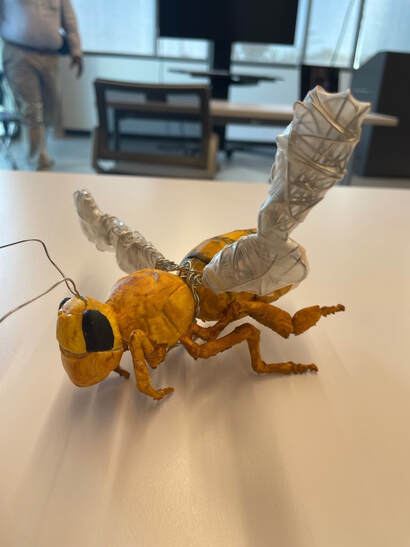When approaching an engineering or design problem, one of the first components that is assessed is constraints. While the ideal solution would completely solve the problem 100% of the time, reality often forces us to whittle down our expectations based on the limitations imposed by the situation. The Ideal Bee project eliminated these limitations by giving us the creative freedom to ideate any solutions that would perfect the bee. Technical and biological details, and even feasibility, were, for the most part, secondary to the intent and impact of the solution. This process made me think more about what “perfection” really means in the real world. In 1770, Voltaire wrote that “perfect is the enemy of good.” But is perfection ever attainable? As we discussed when talking about Wicked problems, it really comes down to your point of view. Every approach has downsides for one party or another. Even with the tremendous creative liberty offered in this assignment, every group talked about potential consequences that their design changes could have on bees and our relationship with them. This was not due to a lack of creativity or innovative thinking. It just speaks to the complexity of the situation, and the interconnectedness of the issues that bees face.
This project also raises the question of whether the bee needs to be changed at all. Is altering the biology of an organism that has evolved over millions of years really the best solution to a problem that has only arisen due to human intervention in the past couple hundred years? It’s always helpful to try multiple approaches and view the problem from a variety of perspectives, but we have seen from past experiments with trying to control nature that even our best intentions carry risks.
Our version of the Ideal Bee added a behavior that makes bees better equipped to survive moisture in cold weather and also enhances their ability to fight viruses. The specifics of this behavior are described in the PDF below. For our prototype and final artifact, we did not strive to make a bee that was 100% lifelike. Instead, we prioritized efficiency and opted for an approach that would highlight the changes that we made to the bee. Each member of our group was able to contribute our unique skills, including graphic design, painting, 3D printing, ceramics, and biology, resulting in a truly interdisciplinary artifact with an eclectic yet appealing aesthetic.
This project also raises the question of whether the bee needs to be changed at all. Is altering the biology of an organism that has evolved over millions of years really the best solution to a problem that has only arisen due to human intervention in the past couple hundred years? It’s always helpful to try multiple approaches and view the problem from a variety of perspectives, but we have seen from past experiments with trying to control nature that even our best intentions carry risks.
Our version of the Ideal Bee added a behavior that makes bees better equipped to survive moisture in cold weather and also enhances their ability to fight viruses. The specifics of this behavior are described in the PDF below. For our prototype and final artifact, we did not strive to make a bee that was 100% lifelike. Instead, we prioritized efficiency and opted for an approach that would highlight the changes that we made to the bee. Each member of our group was able to contribute our unique skills, including graphic design, painting, 3D printing, ceramics, and biology, resulting in a truly interdisciplinary artifact with an eclectic yet appealing aesthetic.
| bee_poster.pdf | |
| File Size: | 219 kb |
| File Type: | |


